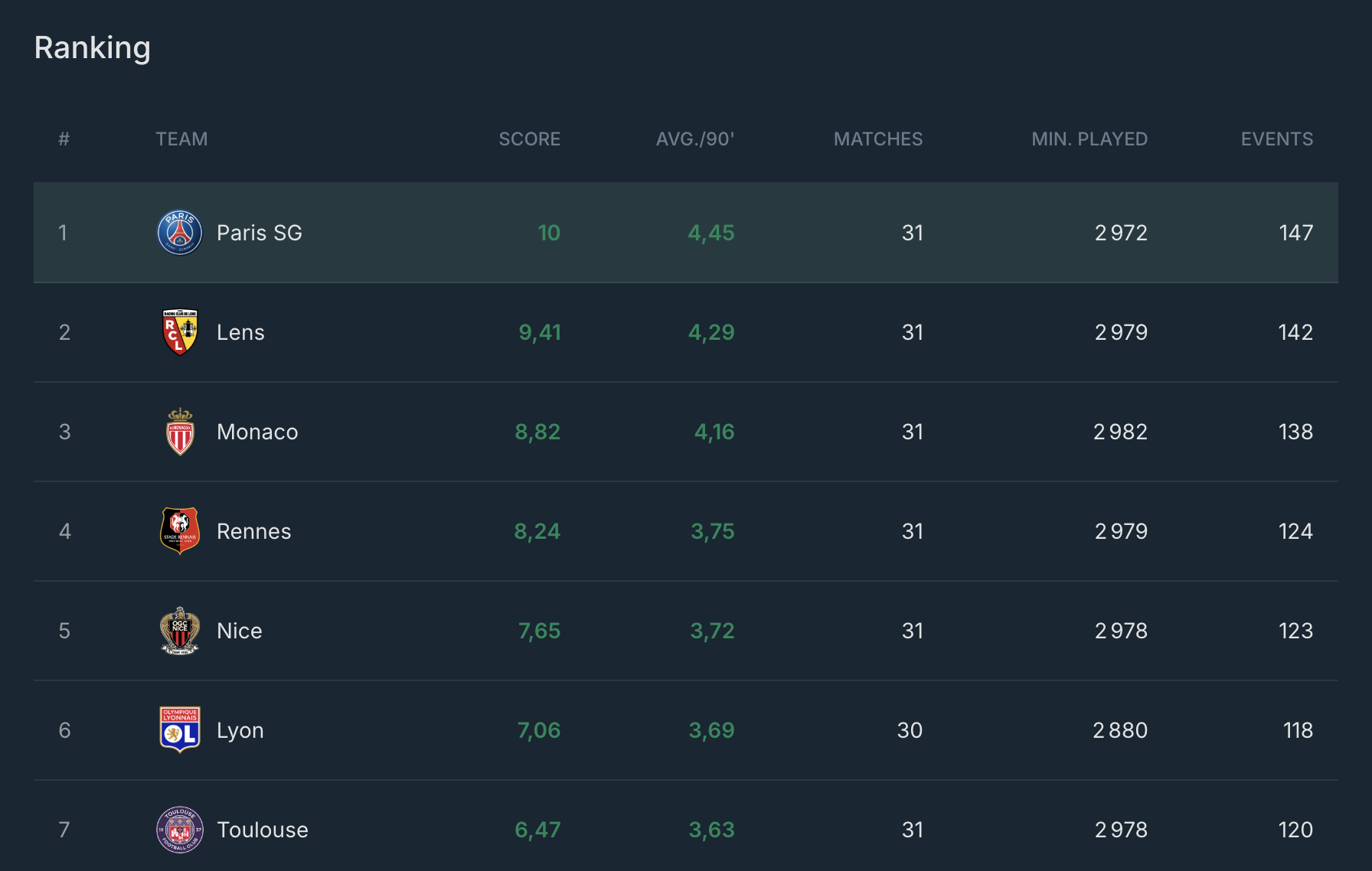At MyGamePlan we can combine and sync all your data sources, and give you the power to fully customize any metric and easily answer any tactical question. In this example, we track how well your team is at counter-pressing after losing the ball in the attacking half.
This can be part of your pre or post-match review, and we will break down how you can set up your tracker, compare performance, spot trends and instantly check the video.
Tracker set up
A Count Tracker measures how often a specific condition is met. In this case, we use event data to track how often PSG apply successful pressure within 10 seconds of losing possession in the attacking third.

Compare performance across your league
PSG apply 4.45 counter-pressures per 90 — leading Ligue 1 ahead of Lens and Monaco. This is a quick way to benchmark your own team’s performance against league peers.

Trendline tracks performance across the season
You can drill down into specific periods of the season. The trendline shows a dip between match weeks 25–27, with PSG falling below the league benchmark (3.28 per 90). A clear signal to review what might have changed tactically or physically.

Video turns data into development
In this example, as the possession is lost in the attacking third, the PSG players are more proactive and anticipate the pass. Video can help pinpoint these moments and highlight team shape in transition.

The position of Marquinhos, Hakimi and Kvaratskhelia allows them to immediately put pressure on the ball carrier, provide cover if needed and regain possession to restart the attack. These clips can be sent straight to players to reinforce positive habits.

Video pinpoints gaps in execution
Analysts can quickly review moments for improvement. When PSG turn over the ball here, their counter-press is too passive. Gaps in shape and distance to the ball allow the opponent to escape pressure.

This means they are unable to recover the ball quickly, leading to a dangerous chance. These moments are automatically tagged and sent to staff — helping drive post-match reviews.





